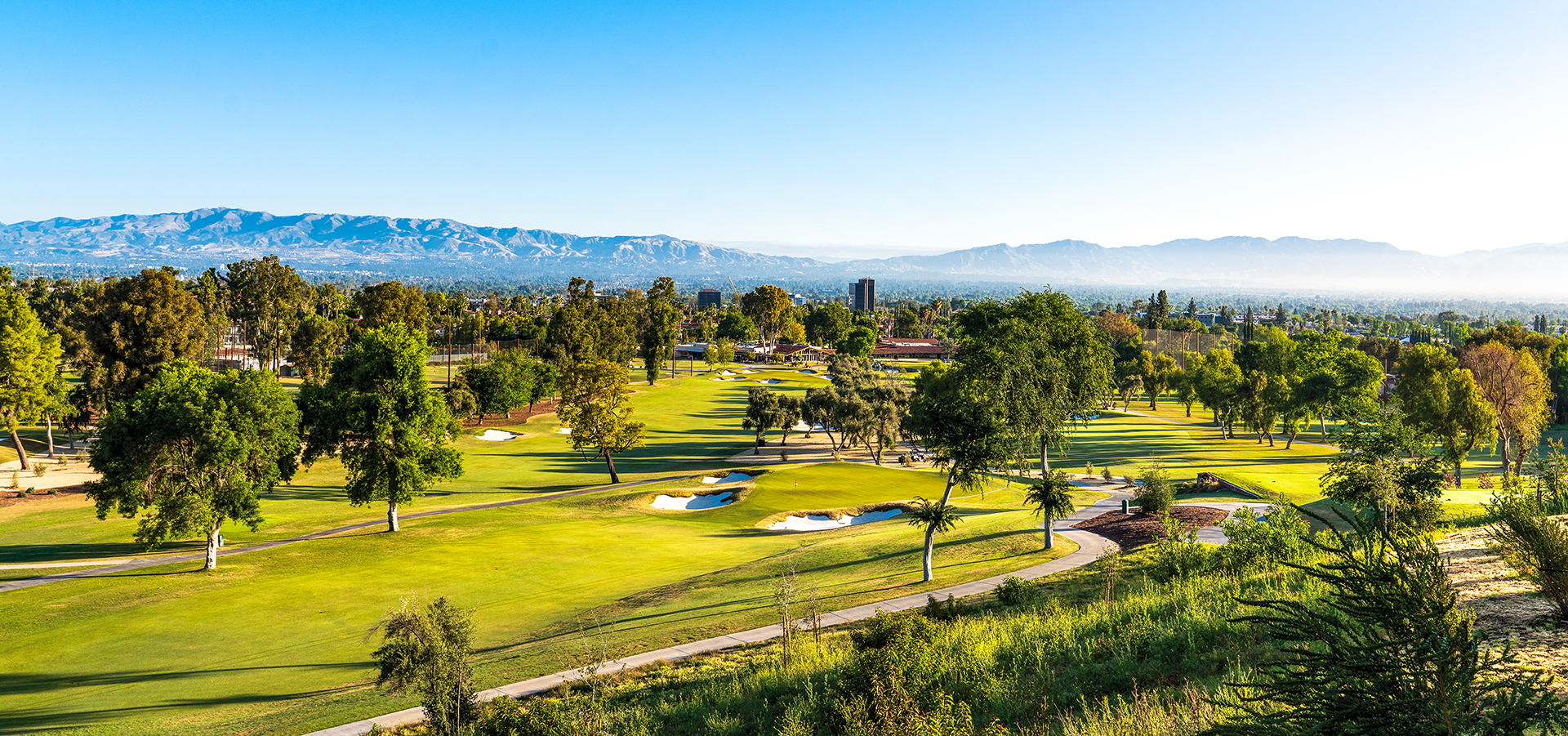The Historic El Caballero Country Club in Tarzana Gets a Dramatic Renovation
Get out on the greens.
-
CategoryPeople
-
Written byRobert Earle Howells
-
Photographed byShane O’Donnell
If you’re walking through the entry hallway at El Caballero Country Club on your way to the verdant links that snake up into the foothills of the Santa Monica Mountains, it’s hard to miss a bronze plaque that depicts the smiling faces of a distinguished-looking older couple.
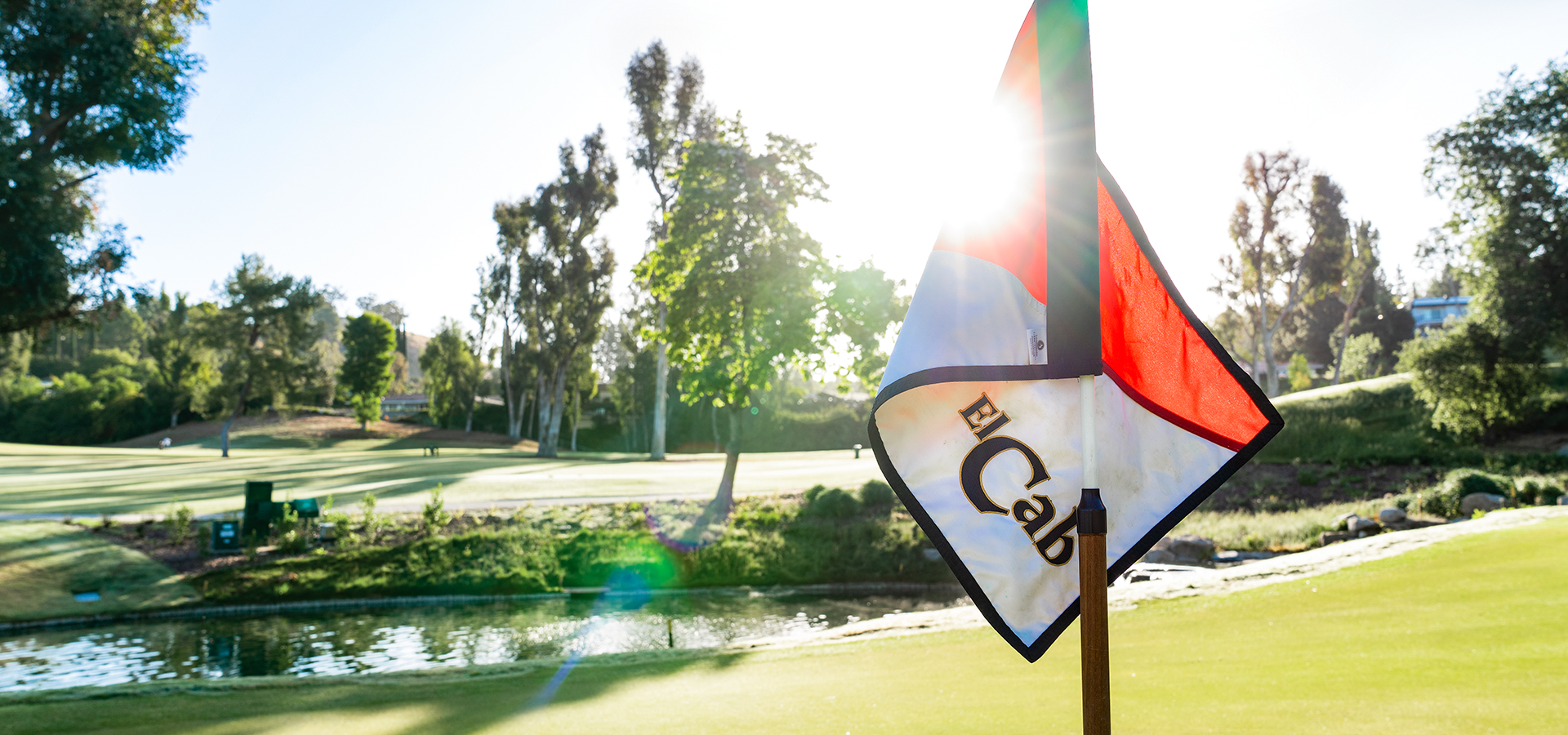
“No person shall be denied the privilege of the Club or employment by it because of race, color, creed, gender or religious belief,” the plaque proclaims.
Now consider the genesis of that statement. The year was 1957, the occasion was the opening of the country club, and the quote is from the smiling gentleman on the plaque—El Caballero’s founder, Bernie Shapiro. (The woman is his wife, Iris.) The Civil Rights movement was in its infancy. Such concepts as equity and inclusivity were hardly the currency of the day, especially in the context of a golf course and country club. Bernie Shapiro was adamant, though: Consideration for membership would never be based on any principle other than a person’s moral character and inclination toward charity.
And El Cab continues to be forward thinking, as its recent restoration proves. Just as nondiscrimination was and is a hallmark of the country club, a sensitivity to environmental concerns helped guide the overhaul. The old course was a water hog. The cost of irrigation was getting out of hand, and the amount of water poured onto old, thirsty turf was wasteful.
“It just wasn’t sustainable,” says El Cab’s general manager and COO, Phil Lopez. It was time to modernize the turf. “Replacing it (rye grass with Bermuda hybrids that require 25% less water) was the biggest and best thing we could do as a club and as environmental stewards.”
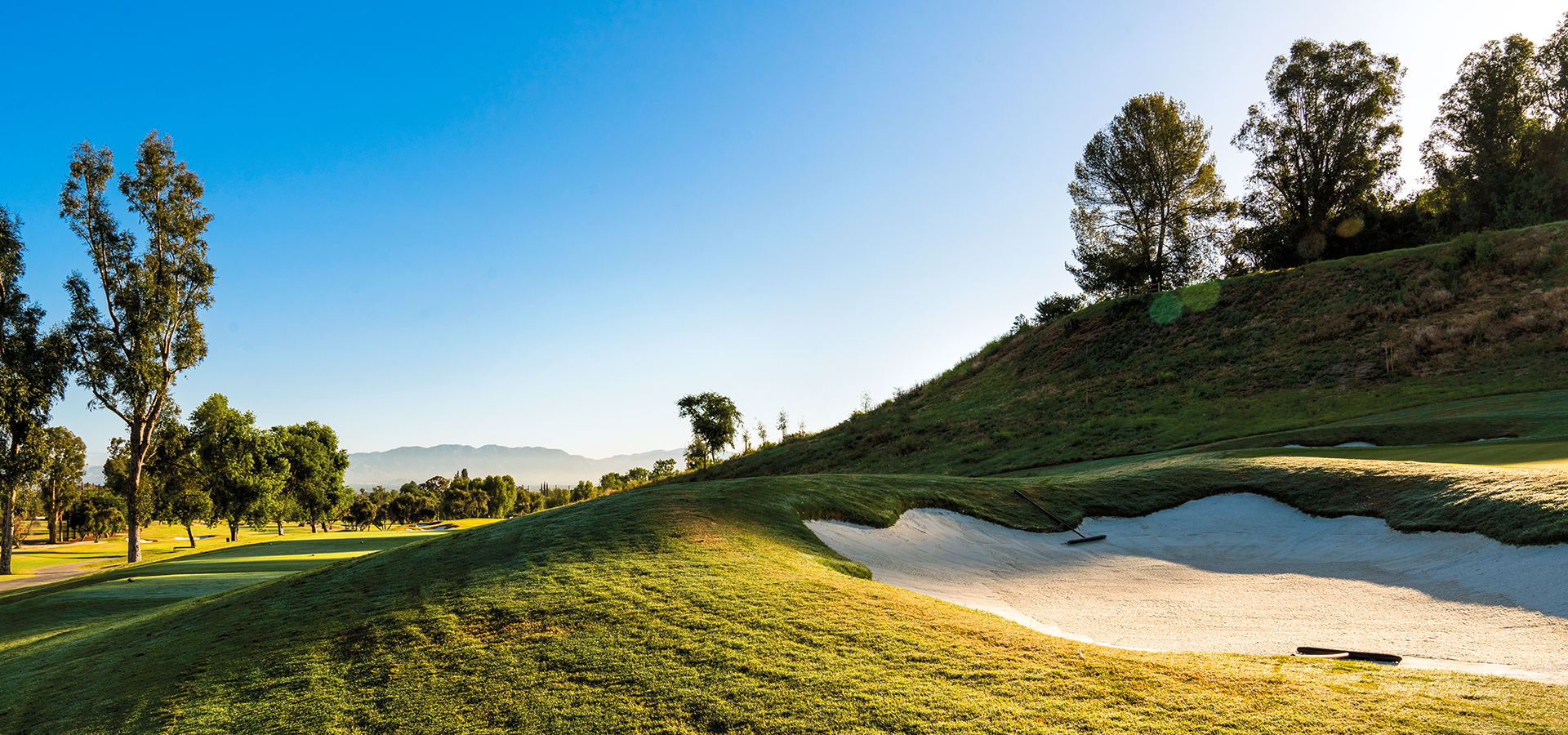
But one thing led to another. As long as they were replacing the grass, why not make some changes to the course to modernize it, make it more playable, and more appealing to a whole range of skill levels? Easy enough—right? Except for one important factor: The course itself was a venerable piece of history. Do you monkey with a layout designed by one of golf’s most iconic architects, Robert Trent Jones Sr.?
Although El Cab received proposals from eight or nine different designers, their choice came down to someone uniquely qualified to maintain the essential layout and philosophy of Robert Trent Jones: none other than Jones’ son Rees Jones, a famed course architect in his own right.
“We didn’t want to blow it up and redesign it,” explains Phil Lopez. “We wanted to restore and modernize it. It came down to the fact that Rees understood the property, his dad’s philosophy, and the values of the membership.”
For Rees, it was a labor of love and respect for his father. “I came here with my father when I worked for him while I was in college,” he says. “I worked with him when he was redesigning it in the 1960s. It’s very important to me because it was one of my father’s favorite jobs.”
Work began in February 2021, with the promise that it would take nine months and about $9 million to restore the course. Exactly nine months later, the first golfers teed off on the new version of venerable El Caballero.
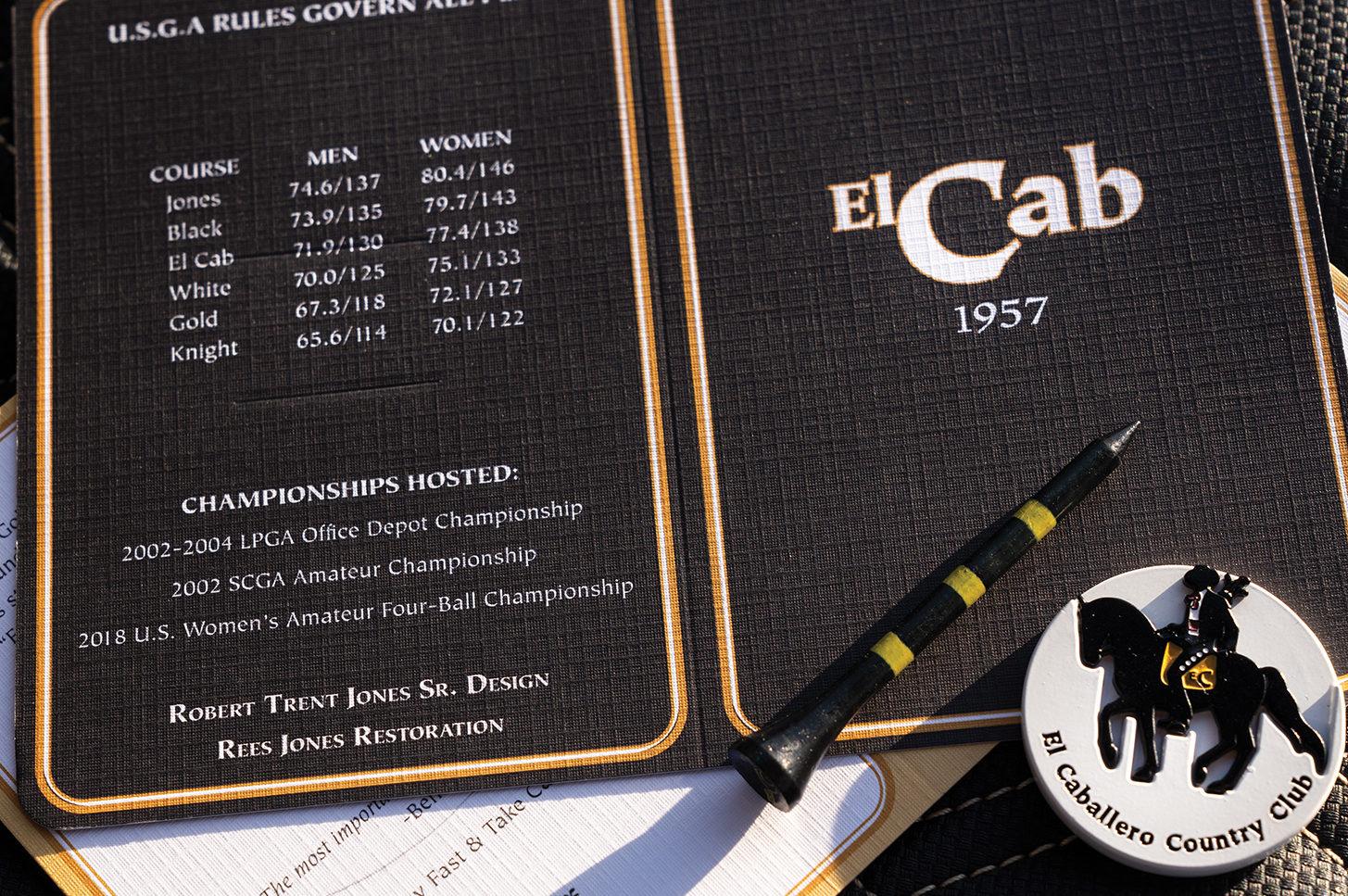
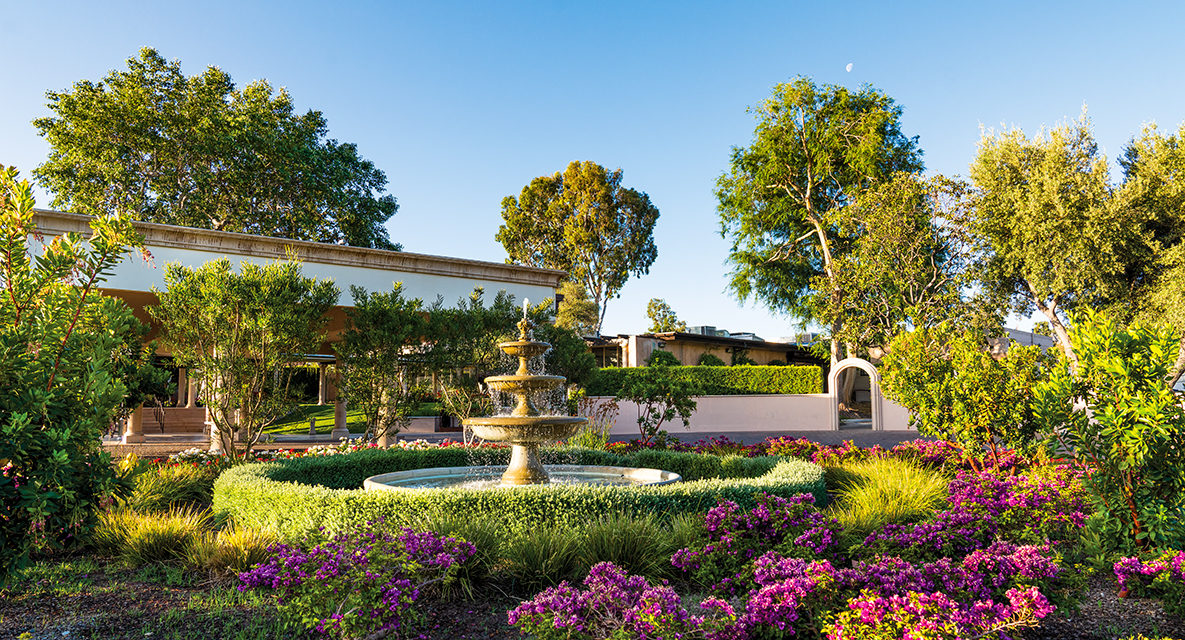
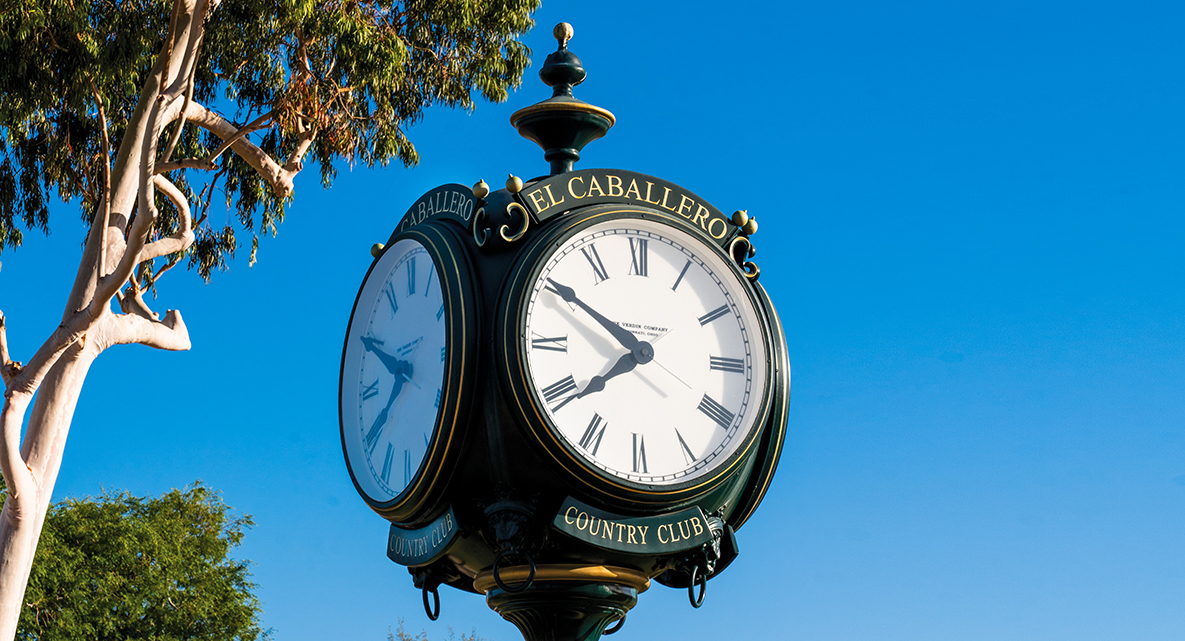
How It Plays
It’s natural to wonder why, beyond replacing outdated turf, such a respected course needed a makeover. “A big part of it is shot options,” explains El Cab’s head pro and director of instruction, Tasha Bohlig. “We used to have really deep bunkers with high walls.” Indeed, some bunkers were so deep that golfers couldn’t see the green they were aiming for. “You had to hit over a tall wall onto a really fast green surface. So Rees shallowed out the bunkers, and it makes for a more fair experience.”
Those speedy greens, typical of today’s courses, also needed addressing. They still play fast, of course, but no longer do they spit out a decent shot and send it backsliding downhill. “With modern equipment, golfers are getting more spin than ever,” says Tasha. “Some shots used to spin off and roll down 70, 80 or 90 yards. Rees knows this. The green may have the same slope now, but he has built up a bit of plateau so you might roll 10 yards off the green rather than 80 or 90.”
“The greens are as fast as ever,” Phil echoes. “But they’re managed for slope and playability. We didn’t take the teeth out of the place, but if you miss a green it’s not an automatic double bogey. There are sweeps where you get a little backstop (if you overshoot) that you can use to bring the ball back toward the hole.”
Hole #5, a short par 4, exemplifies the course upgrade. The green is tucked into an alcove guarded by three sugary white, shallow bunkers and a pond fed by a low waterfall. “Before,” says Phil, “it was very overgrown. You couldn’t see the waterfall. Rees cleaned up around the feature and tucked the green up against it. It’s one of the prettiest green sites you’ll ever see.”
Holes like 5 illustrate another Rees Jones touch: Every hole has a distinct fingerprint. “The golf nerd in me loves that,” says Tasha. “He added a lot of special details in the middle of the course. Five is so different that you’re not going to confuse it with 4. It used to be that members would recount their day and blank out on some holes. Now every hole is memorable.”
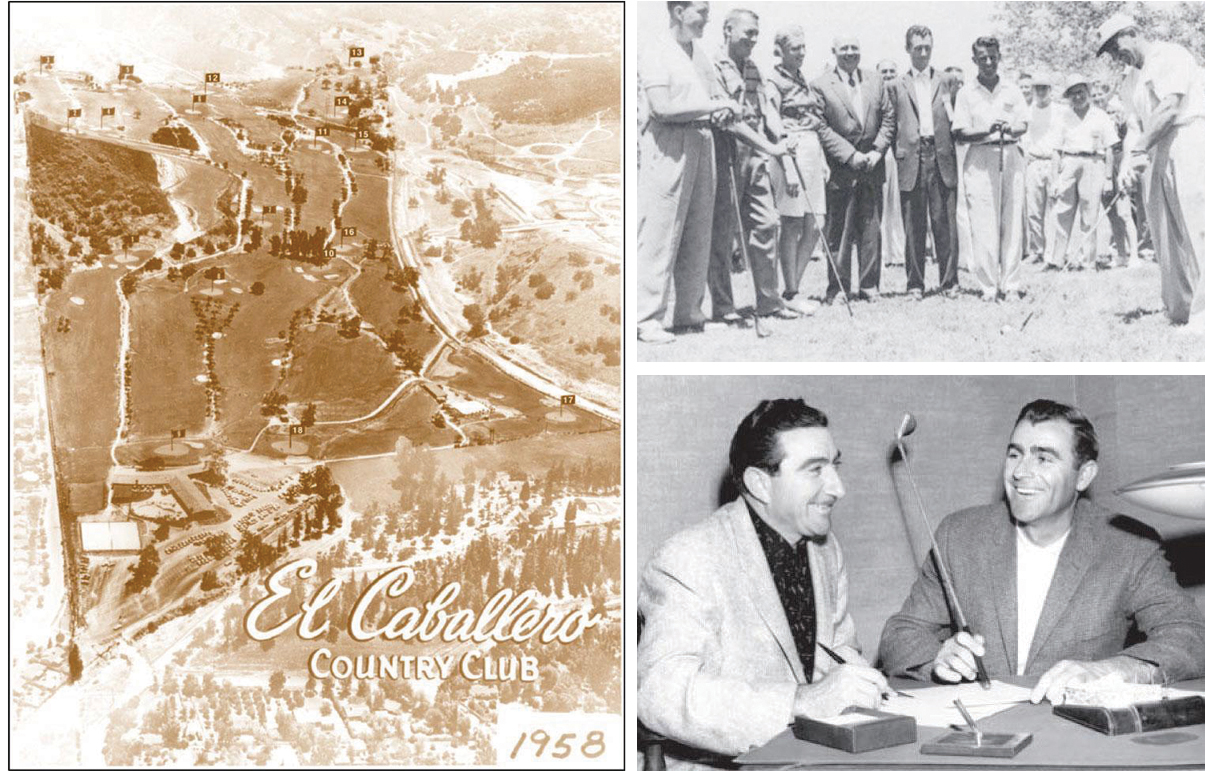
Bernie Shapiro, (bottom image, left), was El Cab’s visionary founder.
How It Looks
Tasha may be a golf nerd, but ask her about her favorite change to the course and she gives a nongolf answer upon reaching the second tee. “This view. I’ll never forget the day we got here and saw the whole Valley where we’d never seen it before.”
The tee box for #2 is perched atop a high rise that reveals a sweeping view to the north of the urban valley and a wild backdrop of the Santa Susana Mountains, rivaling the visage of the Santa Monicas in the opposite direction. The view had been obscured for years.
“A lot of thoughtful care went into clearing areas to create a feel of openness to the entire course,” Tasha says.
Still, Rees has maintained a parkland, tree-lined feel to the course, a hallmark of his father’s designs. He also honored the course heritage in another way. He took a historic olive farm, more than 100 years old, and capitalized on it by adding 150 more olive trees—and, in another water-saving move, surrounded the trees with decomposed granite rather than turf. Side note: The local deer love those olives, some of which also find their way to humans in the form of El Cab’s proprietary olive oil.
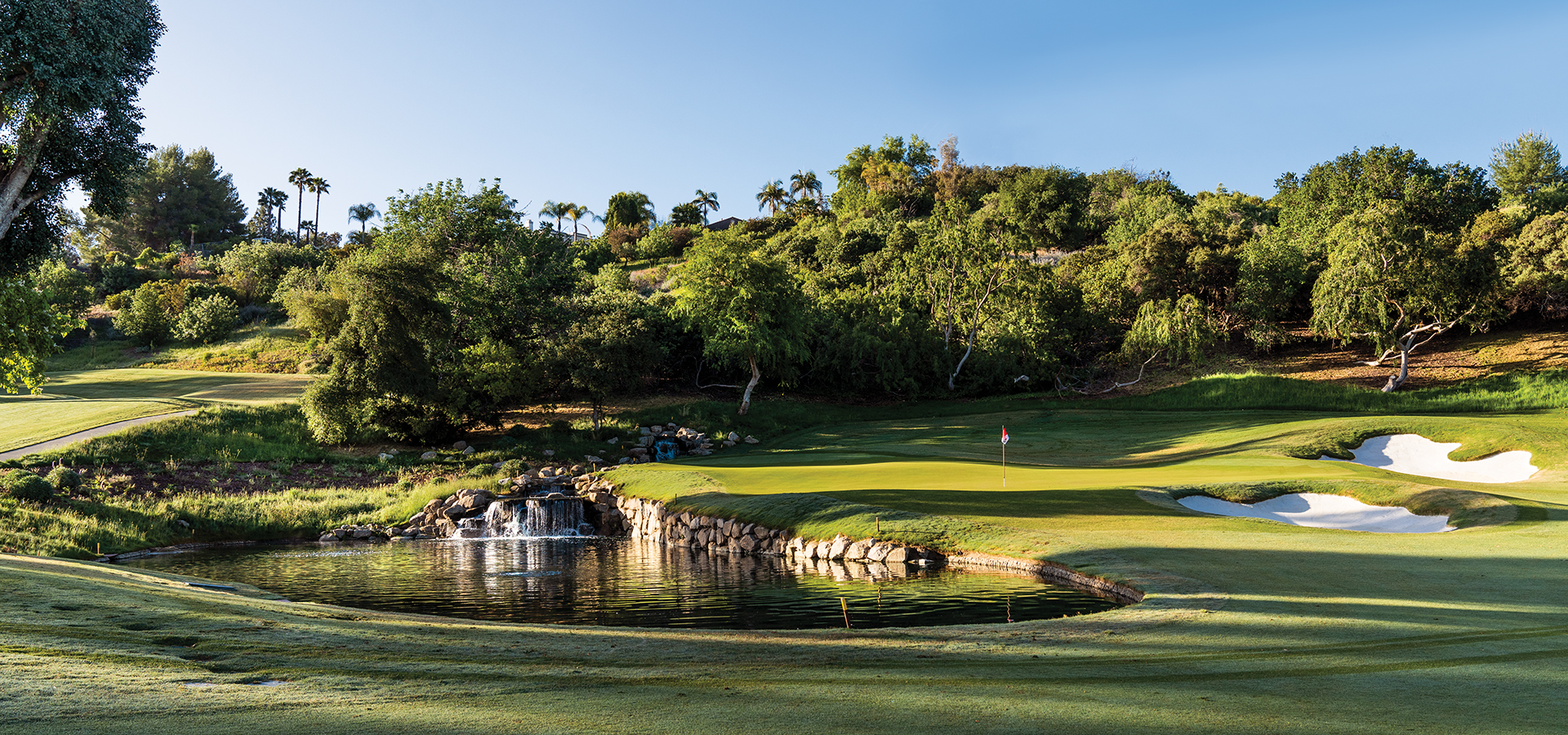
Lots of other upgrades happened over the course of those nine months, including a makeover of the practice area that includes a chipping hole plus green that’s a scale rendition of the full-size #16. There’s also a lighted putting green surrounded by fire pits and seating nicely suited for convivial putting contests. The driving range now boasts Top Tracer technology to give golfers instant visual feedback on their swings. All that lies in the lee of #18, a Robert Trent Jones classic.
You have to figure the old master would be pleased with his son’s work. And so would Bernie Shapiro, whose credo for the course is inscribed on that bronze plaque:
“El Caballero has always ascribed to the theory that life is both play and pilgrimage. Life is good work. And work’s reward is good friends, good food, good sports, and good times.”
Join the Valley Community






